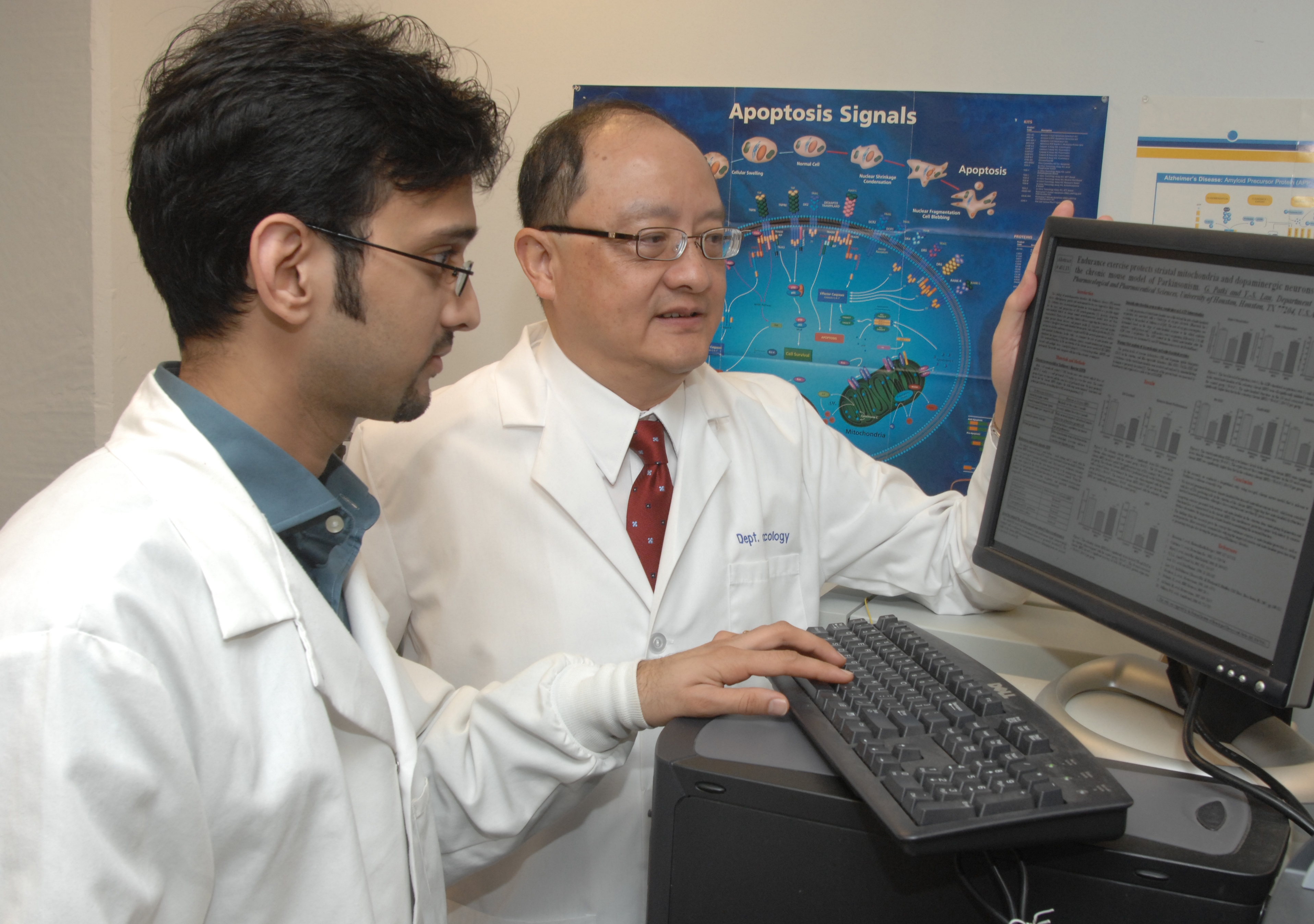
Parkinson's disease involves the degenerative loss of neuronal cells that produce the key chemical, dopamine. While the causes that lead to Parkinson's disease are largely unknown, it has been suggested that neurons may die due to genetic and environmental factors by triggering oxidative stress and impairing mitochondrial function in the dopamine-containing brain cells. Mitochondria are vital organelles that supply energy and support cell survival. Consequentially, individuals with Parkinson's disease suffer movement disability, are prone to frequent falls, and endure a weakening and sedentary lifestyle when reaching an advanced stage.
The chronic mouse model developed in Lau's laboratory exhibits many features that resemble human Parkinson's disease, including impaired movement and a marked loss of brain dopamine and mitochondrial function. The subjects were divided into two groups: one was kept sedentary; the other exercised on a motorized treadmill for 40 minutes daily, five days a week, for 18 weeks. At the end of the study, the exercise-trained Parkinson's mouse model had significantly higher brain dopamine content, exhibited greater brain mitochondrial activity and performed better on balance tests than the sedentary mouse model.
"This research provides scientific evidence that long-term endurance exercise protects brain mitochondria and dopamine-producing neurons from undergoing progressive degeneration as demonstrated in the chronic mouse model of Parkinson's disease," said Lau, who chairs the college's Department of Pharmacological & Pharmaceutical Sciences. "We also proved and want to emphasize that exercise has to be long term in order to sufficiently produce the neuroprotective benefits."
The research was supported by the National Institute of Neurological Diseases and Stroke.
"Continuously challenging the brain with physical and mental activity helps maintain its structure and function," said press conference moderator Carl W. Cotman, Ph.D., professor of neurology at the University of California, Irvine, and an expert in the aging brain. "Most people do not realize that they have control over how their brain functions, but this research shows that by incorporating physical activity into their lifestyle, they benefit their bodies and brains."
In the next phase of their research, Lau and Patki are interested in investigating whether any drugs might mimic the neuroprotective benefits of exercise and whether exercise could replace or reduce the use of Parkinson's medication at early disease stage.
Photo Available upon request by contacting Shawn Lindsey, UH Media Relations at selindsey@uh.edu or (713) 743-5725.